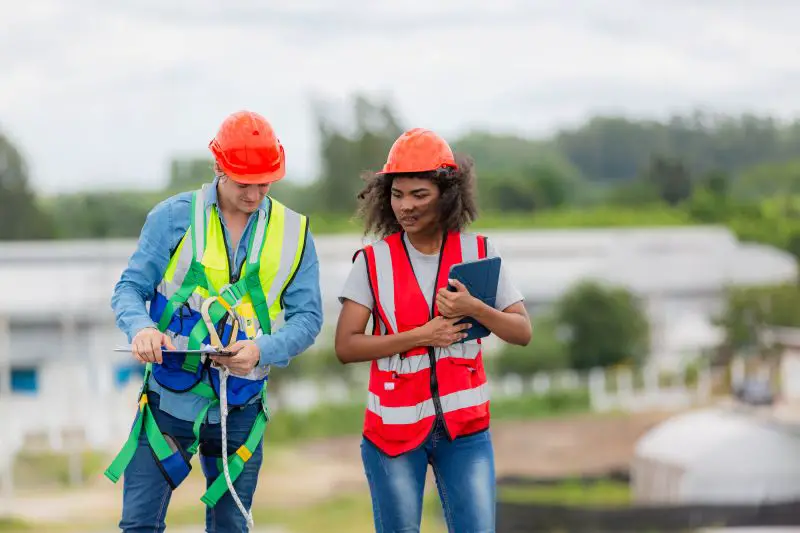Click here to get this post in PDF

Workplace safety has long relied on tried-and-true methods—manual inspections, clipboard checklists, and reactive incident reporting. While these approaches have served organisations for decades, they are increasingly mismatched with today’s operational complexities and speed of risk exposure. As industries grow more data-driven and interconnected, safety protocols must evolve to match this pace.
Artificial intelligence (AI), and particularly AI-powered computer vision, presents a transformative solution. Rather than replacing human oversight, it offers a powerful augmentation: extending visibility, accelerating hazard detection, and allowing safety teams to shift from reactive to proactive strategies. But many companies still operate in a hybrid state—part manual, part digital. The challenge lies in successfully bridging the gap between these worlds.
This article explores how businesses can transition thoughtfully and effectively from traditional safety practices to AI-supported monitoring without losing their people-first ethos or operational continuity.
Understanding the Strengths and Limitations of Manual Safety Checks
Manual inspections and safety walkarounds remain essential tools in many organisations. They allow for contextual judgment, direct observation, and team engagement. Safety managers can identify subtle environmental cues, speak with workers in real time, and ensure on-the-ground compliance with safety rules. In smaller operations, these methods often create a strong culture of accountability.
However, manual methods also carry inherent weaknesses. Human attention is limited, and coverage is inconsistent across large or multi-site operations. Fatigue, distractions, and time constraints lead to missed violations. Reports are often delayed or incomplete, and hazard trends can go unnoticed without structured data.
In high-risk industries or distributed facilities, relying solely on human checks can leave gaps that increase the likelihood of incidents. That’s where AI technologies come in—not to replace humans, but to reinforce and elevate their efforts.
How AI-Powered Monitoring Enhances Workplace Oversight
AI-powered video analytics use machine learning algorithms to process video feeds in real time. These systems detect violations such as PPE non-compliance, unsafe behaviours, or unauthorised entries into restricted zones without requiring human intervention. They operate continuously, with no lapses in attention, no shift changes, and no reliance on memory or manual reporting.
The benefits extend beyond real-time alerts. AI systems generate structured data from observations, allowing teams to identify patterns, forecast emerging risks, and quantify safety performance. Instead of reacting to a single event, managers can track trends over time and implement training or engineering controls accordingly.
This doesn’t mean humans are sidelined. Instead, safety teams gain a second set of eyes—ones that never blink. Their insights become sharper, their response time faster, and their decision-making more evidence-based.
Creating a Bridge Strategy for AI Integration
Many organisations hesitate to introduce AI into safety programs because they fear disruption, complexity, or cultural resistance. But integrating AI doesn’t require an all-or-nothing approach. A successful transition often begins with a hybrid model.
Here are several bridge strategies:
- Pilot in High-Risk Zones: Start AI deployment in areas with the highest incident rates or compliance challenges. Demonstrating results here builds internal support.
- Pair Inspections with AI Review: Use AI to validate and supplement manual reports. Compare insights from both methods to build trust in the technology.
- Train Staff on AI Capabilities: Include frontline teams in the process. Show how AI alerts support their work and help prevent accidents.
- Use AI Data in Team Meetings: Present safety heatmaps or trend analyses generated by AI tools during toolbox talks or shift reviews. This reinforces their role in daily safety conversations.
Ultimately, the most effective AI safety programs are not those with the flashiest technology—but those that are fully embraced by the people using them.
Scaling Benefits Across Sites and Teams
Once AI proves effective in pilot zones, it can be scaled across additional departments or facilities. Because many platforms integrate with existing CCTV systems, there’s no need for major hardware overhauls. Organisations can centralise safety monitoring through a single dashboard while maintaining local oversight where needed.
This model supports multi-site operations, enabling leadership to compare safety performance across locations, standardise protocols, and ensure consistent compliance regardless of geography. It also enhances reporting accuracy and reduces the administrative burden of manual tracking.
And because AI data is visual and timestamped, it supports faster root-cause analysis, audit readiness, and continuous improvement programs.
Building Trust in Data-Driven Safety Systems
One of the biggest challenges in adopting AI safety tools is trust. Employees may worry about surveillance, and managers may be sceptical of relying on algorithms. That’s why transparency and ethical deployment are essential.
Companies must clearly communicate how AI is used, what it monitors, and what it doesn’t. AI systems should focus on conditions and behaviours—not individuals. Anonymised video processing, edge computing, and clear data privacy policies can ease concerns and reinforce trust.
Framing AI as a partner in safety—not a tool for discipline—is also critical. When teams see that AI alerts lead to improved training, quicker interventions, and safer outcomes, adoption becomes much easier.
Learning From Early Adopters
Industry leaders are already proving the value of AI-supported monitoring. In sectors like logistics, manufacturing, and maritime operations, companies have reported significant reductions in workplace incidents, faster near-miss reporting, and improved compliance audit scores after implementing AI video analytics.
Case studies show that even modest deployments—targeting a few key risks—can yield measurable ROI in a matter of months. These results not only improve safety metrics but also support ESG goals, insurer partnerships, and employee retention efforts.
Where to Begin
Organisations that want to explore AI in their safety programs should begin with education. Understanding the use cases, limitations, and implementation pathways of AI-powered safety systems is essential for long-term success.
A practical starting point is this workplace guide to AI-powered safety systems, which outlines the technologies and tactics companies can use to modernise their safety programs. It offers clear, strategic insights for safety professionals and operational leaders alike.
With the right foundation, AI can be a powerful catalyst—not just for safety compliance, but for a true cultural shift toward proactive risk management.
Conclusion-Free Closing Thoughts
As safety responsibilities grow more complex, so too must the tools used to manage them. Bridging the gap between manual checks and AI-powered monitoring is not about abandoning legacy practices—it’s about enhancing them. By thoughtfully integrating AI technologies, safety leaders can gain a clearer view of risk, act faster, and strengthen safety cultures across every level of the organisation.
The shift is not binary. It’s a continuum—one that starts with small, strategic steps and builds into system-wide transformation. And for companies ready to start that journey, the advantages will be both immediate and lasting.
Also read:
Top 5 Reasons to Invest in Workplace Health and Safety Online
Image source: elements.envato.com
